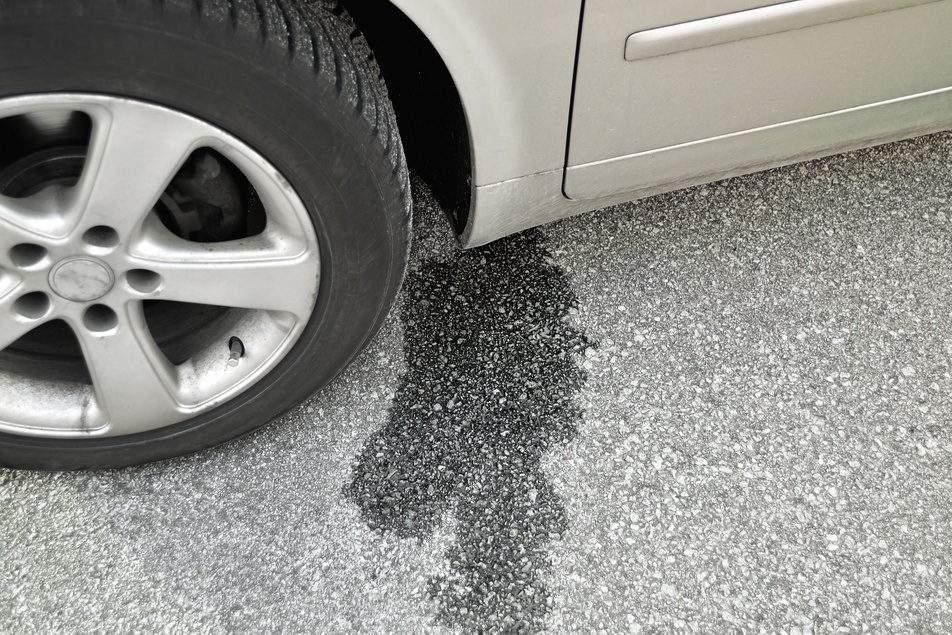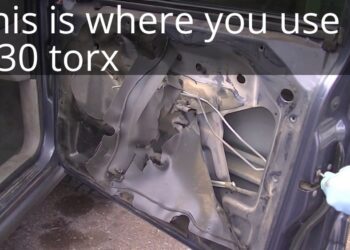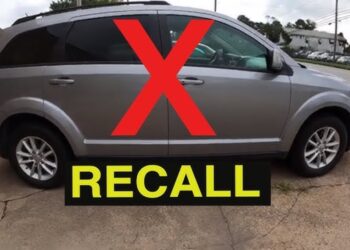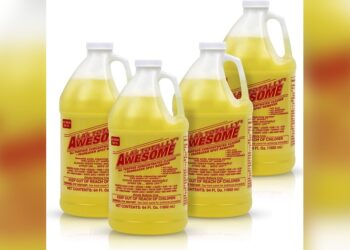Car fluid leaks can cause serious problems for your vehicle. They can lead to costly repairs if not addressed.
Understanding car fluid leaks is crucial for maintaining your vehicle’s health. Leaks can come from different systems like the engine, transmission, or cooling system. Identifying and fixing these leaks early can save you time and money. In this blog, we will explore the common types of car fluid leaks, their causes, and what you can do to prevent them.
By the end, you will have a better understanding of how to keep your car running smoothly and avoid potential hazards. Let’s dive into the world of car fluid leaks and learn how to tackle them effectively.
Introduction To Car Fluid Leaks
Car fluid leaks can cause serious issues. They can damage your vehicle. They can also be a safety risk. Understanding these leaks is important. It helps you keep your car in good shape. It also keeps you safe on the road.
Importance Of Addressing Leaks
Ignoring fluid leaks can lead to big problems. A small leak can become a major issue. For example, an oil leak can cause engine damage. This can be very costly. Leaks can also create slippery spots on the road. This is dangerous for you and other drivers.
Addressing leaks quickly can save you money. It can prevent larger repairs. It can also keep your car running smoothly. This ensures your car lasts longer and performs well.
Common Fluids That Leak
| Fluid Type | Color | Potential Issues |
|---|---|---|
| Engine Oil | Brown or Black | Engine damage, overheating |
| Transmission Fluid | Red or Brown | Transmission failure, shifting issues |
| Coolant | Green, Yellow, or Pink | Overheating, engine damage |
| Brake Fluid | Clear or Brown | Brake failure |
| Power Steering Fluid | Amber or Pink | Steering issues |
Not all leaks are the same. Each fluid has its own color and potential issues. Identifying the type of fluid can help you understand the problem. This can guide you in getting the right repair.

Credit: www.customcompleteautomotive.com
Identifying Fluid Leaks
Car fluid leaks can be a serious issue. They often signal underlying problems. Identifying these leaks early can save you from costly repairs. Let’s dive into how you can spot these leaks.
Visual Inspection Tips
Start by checking under your car. Look for any wet spots or puddles. Different fluids have different colors. Oil is usually brown or black. Transmission fluid is red or pink. Coolant can be green, yellow, or orange.
Use a flashlight to see better. Check around the engine and under the car. Pay attention to any unusual smells. Sweet smells can indicate a coolant leak. Burning smells may point to oil or transmission fluid leaks.
Common Leak Locations
Engine oil leaks often come from the oil pan or valve cover gasket. Look for leaks around these areas. Transmission fluid leaks typically occur at the transmission pan or cooler lines. Check these spots for any signs of fluid.
Coolant leaks are common at the radiator or hoses. Inspect these parts for wetness or corrosion. Brake fluid leaks usually happen at the brake lines or master cylinder. Check these areas carefully.
Power steering fluid leaks can occur at the steering pump or hoses. Look for leaks around these components. By knowing these common locations, you can better identify and address fluid leaks.
Types Of Car Fluids
Understanding the different types of car fluids is crucial for vehicle maintenance. Each fluid plays a specific role in ensuring your car runs smoothly. Recognizing the types of car fluids and their functions can help you identify potential leaks and maintain your vehicle effectively.
Engine Oil
Engine oil lubricates the engine’s moving parts. It reduces friction and prevents overheating. Regular checks and changes keep the engine running smoothly. Leaks can lead to engine damage. Look for dark brown or black spots under your car.
Coolant
Coolant, or antifreeze, regulates your car’s temperature. It prevents overheating and freezing. A coolant leak can cause the engine to overheat. Check for bright green, orange, or pink puddles. Ensure the coolant reservoir is at the right level.
Transmission Fluid
Transmission fluid lubricates and cools the transmission system. It ensures smooth gear shifts. Leaks can lead to transmission failure. Look for red or brown fluid under your car. Regular checks can prevent costly repairs.
Brake Fluid
Brake fluid transfers force from the brake pedal to the brakes. It is essential for safe braking. A leak can lead to brake failure. Check for clear to brown fluid near the wheels or under the car. Regular maintenance is vital for safety.
Power Steering Fluid
Power steering fluid makes steering easier. It helps control the hydraulic power steering system. Leaks can make steering difficult. Look for reddish or light brown fluid under the front of the car. Check the fluid level regularly to ensure smooth steering.

Credit: www.myqualitytuneup.com
Engine Oil Leaks
Engine oil leaks can be a troubling issue for car owners. Leaking oil not only creates unsightly stains but also indicates a problem with your vehicle. If left unchecked, oil leaks can lead to serious engine damage. Understanding the causes and solutions can help you keep your car running smoothly.
Causes Of Oil Leaks
Worn-out seals and gaskets are common causes of oil leaks. Over time, they can deteriorate and allow oil to escape. Another cause is a damaged oil pan. Road debris can hit the oil pan, causing cracks or holes. Loose or improperly installed oil filters can also lead to leaks. In some cases, the oil drain plug might not be tightened properly. This can result in oil seeping out.
High engine pressure can force oil out of weak spots. This pressure can build up due to various factors. Overfilling the oil reservoir is one such factor. Additionally, a clogged PCV valve can increase engine pressure.
Fixing Oil Leaks
Start by identifying the source of the leak. Check the oil pan and drain plug for damage. Inspect the oil filter and ensure it is properly installed. If the seals or gaskets are worn out, they need replacement.
Use a high-quality gasket sealer when installing new gaskets. This can help prevent future leaks. Tighten the oil drain plug to the recommended torque. Always follow the manufacturer’s guidelines.
Replace a damaged oil pan. This might require professional help. Check the PCV valve and clean or replace it if needed. Regular maintenance can prevent many oil leak issues.
Keep the engine oil at the correct level. Overfilling can cause leaks and other problems. Regularly inspect your vehicle for signs of leaks. Quick action can prevent minor issues from becoming major repairs.
Coolant Leaks
Coolant leaks are a common problem that can affect your car’s performance. Coolant, or antifreeze, helps maintain the engine’s temperature. If you notice a puddle of green, yellow, or pink fluid under your car, it might be a coolant leak. Addressing coolant leaks quickly is crucial to avoid engine damage.
Symptoms Of Coolant Leaks
Identifying a coolant leak early can save you from costly repairs. Here are some symptoms to watch for:
- Overheating engine: The temperature gauge rises or the warning light turns on.
- Sweet smell: A sweet odor comes from the engine area.
- Visible puddles: Green, yellow, or pink fluid under your car.
- Low coolant levels: Frequent need to refill the coolant reservoir.
- White exhaust smoke: White smoke from the tailpipe, indicating coolant burning.
Repairing Coolant System
Repairing a coolant leak involves several steps. These steps help ensure the system functions properly:
- Identify the leak source: Check hoses, radiator, and water pump for leaks.
- Drain the coolant: Safely drain the existing coolant from the system.
- Replace damaged parts: Install new hoses, gaskets, or a radiator if needed.
- Refill the system: Use the correct type of coolant and fill to the recommended level.
- Bleed the system: Remove air pockets by bleeding the cooling system.
- Test the repair: Run the engine and check for leaks and proper temperature.
Regularly check your coolant levels and inspect for signs of leaks. This practice can prevent serious engine issues and keep your car running smoothly.

Credit: www.1aauto.com
Transmission Fluid Leaks
Transmission fluid leaks can cause major issues for your car. They can lead to poor performance and costly repairs. It’s important to know the signs and fixes for transmission leaks. This knowledge can save you time and money. Let’s dive into the details.
Signs Of Transmission Leaks
Spotting a transmission fluid leak early can prevent serious problems. Look for red or brown fluid under your car. This fluid may have a sweet or burnt smell. Check the transmission fluid level regularly. If it drops suddenly, you may have a leak. Pay attention to how your car shifts gears. Rough or delayed shifting can signal a leak.
Transmission Leak Fixes
Fixing a transmission leak depends on the cause. First, inspect the transmission pan. Tighten any loose bolts and replace a damaged gasket. Next, check the transmission fluid lines. Repair or replace any cracked or worn lines. If the leak comes from the seals, you may need a professional mechanic. They can replace the seals and ensure the transmission works properly. Regular maintenance helps prevent future leaks.
Brake Fluid Leaks
Brake fluid leaks are a serious issue that can compromise your vehicle’s safety. Brake fluid is essential for the proper functioning of your braking system. Without it, your brakes may fail, leading to dangerous situations.
Identifying Brake Fluid Leaks
Identifying brake fluid leaks early can prevent accidents. Here are some signs to watch for:
- Soft or spongy brake pedal: If your brake pedal feels soft, there might be a leak.
- Brake warning light: A dashboard warning light may indicate low brake fluid.
- Fluid under the car: Look for clear or yellowish fluid under the car.
- Strange noises: Squealing or grinding sounds when braking can signal a problem.
Resolving Brake Fluid Issues
Resolving brake fluid issues quickly is crucial for safety. Follow these steps:
- Locate the leak: Check the brake lines and master cylinder for leaks.
- Repair or replace: Damaged parts should be repaired or replaced immediately.
- Refill brake fluid: Use the correct type of brake fluid to refill the system.
- Bleed the brakes: Remove air from the brake lines for proper function.
- Test the brakes: Ensure the brakes work correctly before driving.
Preventing brake fluid leaks is also important. Regular maintenance can help:
- Inspect brake lines: Check for wear and tear regularly.
- Check fluid levels: Ensure brake fluid levels are adequate.
- Service brakes: Have your brakes serviced by a professional annually.
| Problem | Action |
|---|---|
| Soft brake pedal | Inspect for leaks, refill fluid, and bleed brakes |
| Warning light | Check fluid levels and inspect the system |
| Fluid under car | Locate and repair the leak |
| Strange noises | Inspect brake components and replace if needed |
Power Steering Fluid Leaks
Power steering fluid leaks can cause serious problems for your car. This fluid helps you steer your vehicle smoothly. Leaks can lead to hard steering and potential safety issues. It is important to know how to detect and repair these leaks.
Detecting Power Steering Leaks
Detecting power steering leaks early can save you time and money. Look for fluid spots under your car. Power steering fluid is usually red or pink. It may also be dark brown if it is old.
Another sign is a whining noise when you turn the wheel. This noise means the power steering pump is low on fluid. You may also notice that steering feels harder than usual. These signs can indicate a leak in the system.
Repairing Power Steering System
Repairing the power steering system depends on the leak’s location. Sometimes, the power steering hose is the culprit. If so, replacing the hose can fix the issue. Other times, the power steering pump may be leaking. In this case, the pump might need replacement.
Seals and gaskets can also wear out and cause leaks. Replacing these parts can stop the fluid from leaking. Ensure the new parts are compatible with your vehicle. Finally, check the power steering fluid level regularly. Keeping the fluid at the right level helps prevent future leaks.
Preventing Future Leaks
Preventing future car fluid leaks can save you time, money, and headaches. Regular maintenance and using quality parts are essential steps. Let’s dive deeper into these practices.
Regular Maintenance Tips
Check your car fluids regularly. Look at the oil, coolant, and brake fluid levels. Pay attention to any changes in fluid levels. This can indicate a potential leak. Inspect the hoses and seals. Replace any worn or damaged parts immediately. Keep your car’s engine bay clean. Dirt can hide leaks and make them worse over time.
Using Quality Parts
Always use high-quality parts for your car. Cheap parts can fail quickly and cause leaks. Invest in good-quality seals and hoses. They last longer and provide better protection. Choose the right fluids for your car. Follow the manufacturer’s recommendations. Using the wrong fluid can damage your car and lead to leaks. Regularly replace your car’s fluids. Old fluids can cause corrosion and leaks.
Frequently Asked Questions
What Causes Car Fluid Leaks?
Car fluid leaks are often caused by worn seals, gaskets, or damaged hoses.
How To Identify A Fluid Leak In My Car?
Look for puddles under your car and check fluid levels regularly.
Are Car Fluid Leaks Dangerous?
Yes, they can lead to engine damage, brake failure, or overheating.
What Fluids Can Leak From A Car?
Common fluids include oil, coolant, transmission fluid, brake fluid, and power steering fluid.
How To Fix A Car Fluid Leak?
Identify the source, replace damaged parts, and refill the lost fluid. Seek professional help if needed.
Conclusion
Detecting car fluid leaks early is crucial. Ignoring them can lead to bigger problems. Regular checks help maintain your vehicle’s health. Look for common signs like puddles or stains under the car. Identify the fluid by its color and texture.
Consult a mechanic if you’re unsure. Stay vigilant and proactive. Keeping your car in good shape ensures safety and longevity. Don’t let small leaks turn into major issues. Prioritize regular maintenance and inspections. Your car will thank you with reliable performance.

















